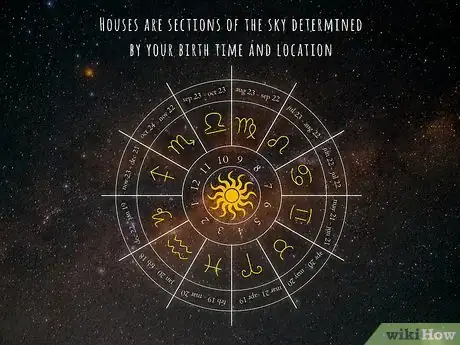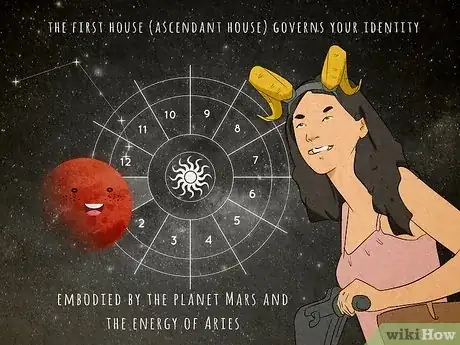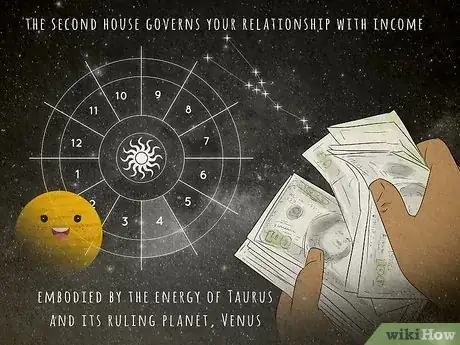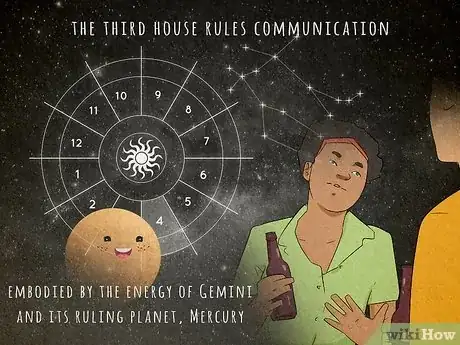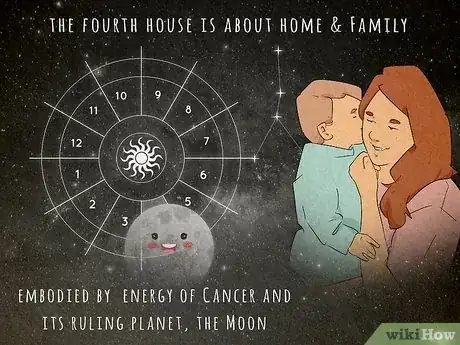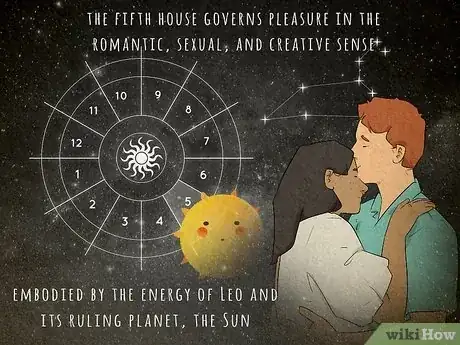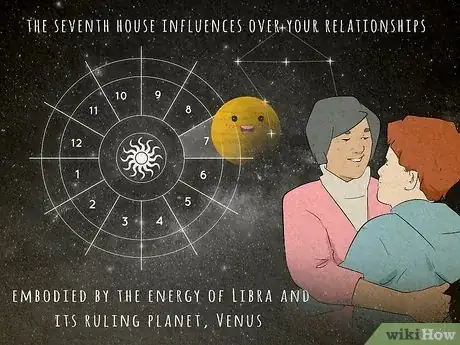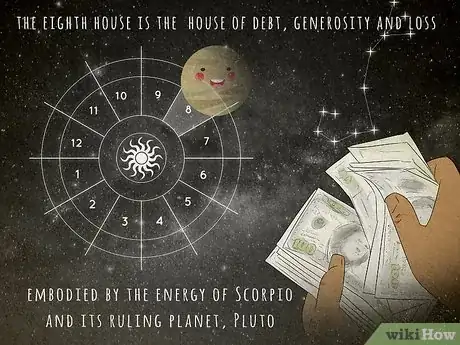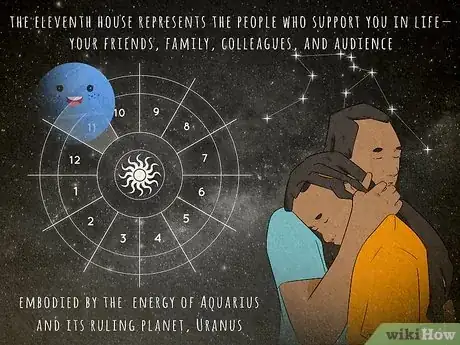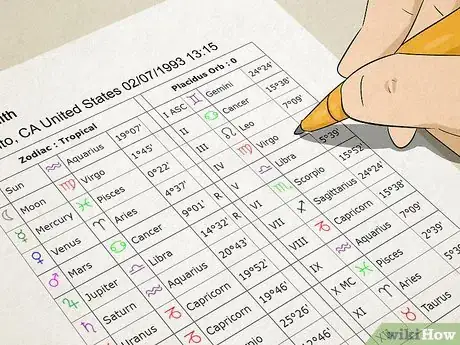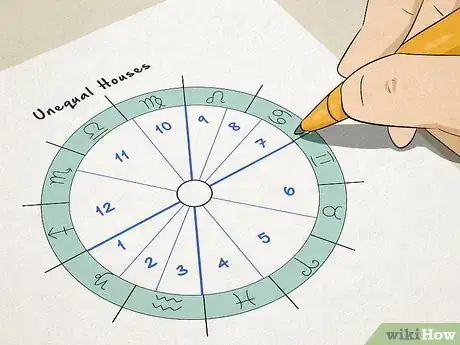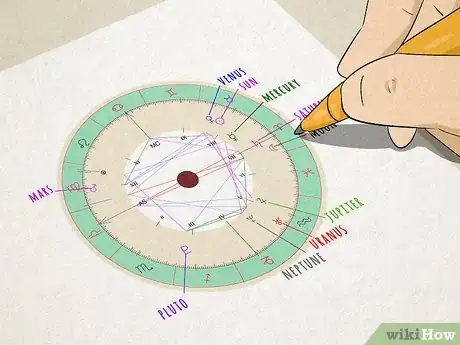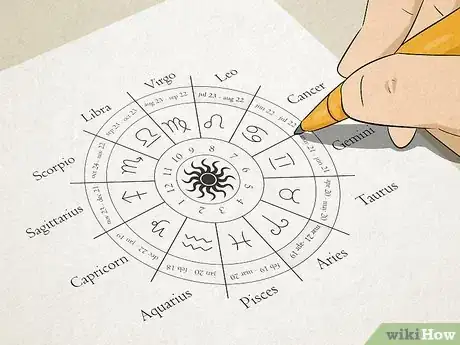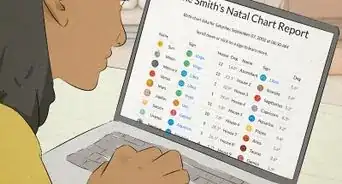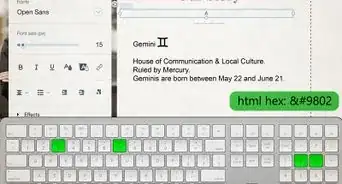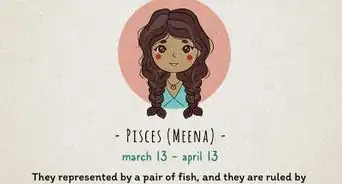This article was co-authored by Angel Eyedealism and by wikiHow staff writer, Dan Hickey. Angel Eyedealism is an Astrologer and Performance Artist based in the Lower East Side of Manhattan. With nearly three decades of astrology experience, Angel specializes in relocation astrology and astrocartography. Eyedealism has been featured in numerous media outlets such as Vogue, Cosmopolitan, The Atlantic, The Washington Post, Refinery29, NBC, MTV, Showtime, and Bravo. Angel aims to help others through a straightforward, kind, and humorous astrological lens, utilizing her entertainment and singing skills for performance art astrology readings.
This article has been viewed 28,461 times.
The houses of your birth chart provide lots of information about your life and personality, but did you know they might be in different places depending on who you ask? Many house calculation methods have been created over the centuries to determine exactly where the boundaries between each house are. If you’ve ever wondered how astrologers calculate these angles and what the implications are for your birth chart, this is the article for you! Read on to learn more about the houses, popular calculation methods, and how they influence your chart.
Steps
The 12 Houses in Astrology
-
1The 1st House: This house is always found on the eastern horizon and contains your Ascendant (the sign that was on the Eastern horizon when you were born). This house governs your identity—what it feels like to be you, how you express yourself, even your appearance and wellness.
- This house is embodied by the energy of Aries and its ruling planet, Mars.
- Your Ascendant sign is very important. It’s your personality and persona, your social standing, and the way you look at things. It also determines your Descendant (the sign on the Western horizon when you were born, 180 degrees away from the Ascendant), which determines who you’re attracted to and get along with.
-
2The 2nd House: The next house governs your relationship with income. That can refer to actual money and possessions, or in a more philosophical sense, the things that feed you (like fulfilling relationships or a cause you care about). It also affects your sense of security and is representative of your self-worth.
- This house is embodied by the energy of Taurus and its ruling planet, Venus.
-
3The 3rd House: This house is all about your communication style. It determines how you talk, use social media, and communicate with friends and family. Everything to do with your 3rd house feels familiar and energetic.
- This house is embodied by the energy of Gemini and its ruling planet, Mercury.
-
4The 4th House: Located at the bottom of the sky (the place where the sun goes at midnight), this house is all about home and family. It determines how you create your safe space and your feelings toward relatives, ancestry, and lineage. Your roots are located in this house.
- This house is embodied by the energy of Cancer and its ruling planet, the Moon.
-
5The 5th house: This house governs pleasure in the romantic, sexual, and creative sense. This is where you feel good, and good things come to pass for you. People with strong 5th house placements often live lives full of fun and joy.
- This house is embodied by the energy of Leo and its ruling planet, the Sun.
-
6The 6th House: Your sense of maintenance and routine are rooted in this house. Your daily chores and work habits stem from here, as well as your relationships with coworkers and employees. This is also where you manage illness, injury, and fitness.
- This house is embodied by the energy of Virgo and its ruling planet, Mercury.
-
7The 7th House: This house is your Descendant, located opposite your Ascendant. It has the most sway over your relationships—friends, families, partners, and enemies—and is where you find love. It is also associated with death, since this is where the sun sets in the western sky.
- This house is embodied by the energy of Libra and its ruling planet, Venus.
-
8The 8th House: Known as the house of debt, this is the place where you deal with generosity and loss. You face unavoidable events in this house, like death or taxes, and are often dealt the question “Is this worth it?” when weighing a decision that might put you in debt.
- This house is embodied by the energy of Scorpio and its ruling planet, Pluto.
-
9The 9th House: This house governs how you travel and pursue knowledge and higher education. It’s a house full of joy, and people with strong placements here tend to be leaders in academia, philosophy, or religion. This is where your beliefs shape the world around you.
- This house is embodied by the energy of Sagittarius and its ruling planet, Jupiter.
-
10The 10th House: The cusp of this house is located at Midheaven (the point in the sky where the sun is the highest at noon). This house is all about your career, public image, and reputation. This is where you shine, show off, and get recognition.
- This house is embodied by the energy of Capricorn and its ruling planet, Saturn.
-
11The 11th House: This is where you find the people who support you in life—your friends, family, colleagues, and audience. This house facilitates collaboration and connection with like-minded people and is where your dreams and visions can be achieved.
- This house is embodied by the energy of Aquarius and its ruling planet, Uranus.
-
12The 12th House: This is the house of your unconscious. Just as the 1st house is all about who you are, this house governs things out of your control. It values structure and is a place where you sacrifice your own needs for the good of the group. Here, you learn to let go.
- This house is embodied by the energy of Pisces and its ruling planet, Neptune.[2]
